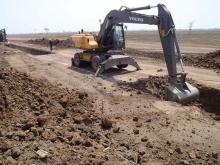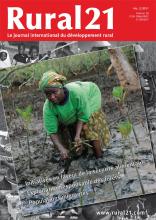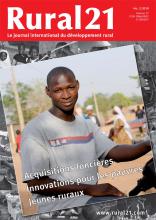Land Library
Bienvenue dans la bibliothèque du Land Portal. Explorez notre vaste collection de ressources en libre accès (plus de 74 000), comprenant des rapports, des articles scientifiques, des articles de recherche, des publications évaluées par des pairs, des documents juridiques, des vidéos et bien plus encore.
/ library resources
Showing items 1 through 9 of 15.Mapping Together helps people use Collect Earth mapathons to monitor tree-based restoration. Collect Earth enables users to create precise data that can show where trees are growing outside the forest across farms, pasture, and urban areas and how the landscape has changed over time.
You cannot put a price tag on nature — but the economic numbers point to its protection,” said Anthony Waldron, the lead author of the report and researcher focused on conservation finance, global species loss and sustainable agriculture.
Food security in Africa needs abundant, affordable and nutritious food for the growing population.
•Smallholder farmers lack sufficient land or economic incentives to invest in agriculture.
•The above issues create a ‘wicked problem’ – a conundrum for future food security.
Nature loss is a planetary emergency. Humanity has already wiped out 83% of wild mammals and half of all plants and severely altered three-quarters of ice-free land and two-thirds of marine environments.
The buying up of farmland by international investors is viewed highly critically. However, sweeping judgements could be inappropriate, as our author demonstrates with survey results from Ethiopia and Uganda.
Torrential floods are the most frequent natural catastrophic events in Serbia, causing the loss of human lives and huge material damage, both in urban and rural areas.
Au Burkina Faso, le potentiel en terres arables à vocation agricole est épuisé. À l’avenir, la population en rapide expansion ne pourra être nourrie que s’il est possible d’accroître les rendements sur les terres cultivées existantes.
Burkina Faso is already using all its possible farmland. In future the only way to feed the rapidly growing population will be by increasing yields on existing land. Building stone contour lines enables rainwater to be better used and slows erosion.
Si les investissements étrangers directs (IED) dans les terres arables peuvent stimuler la croissance économique, ils peuvent aussi, le cas échéant, affecter de manière négative la situation des revenus et la sécurité alimentaire de la population locale.





